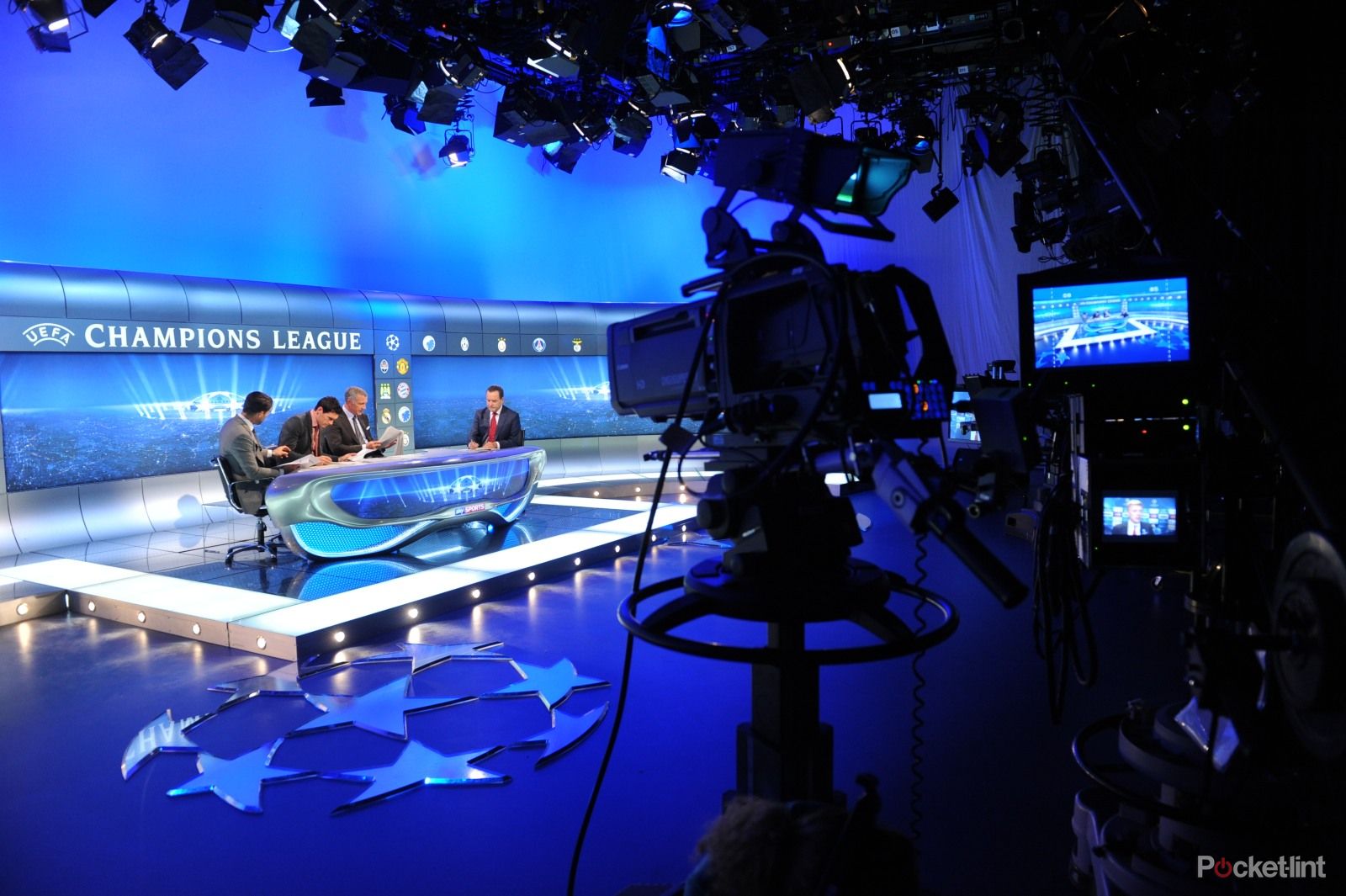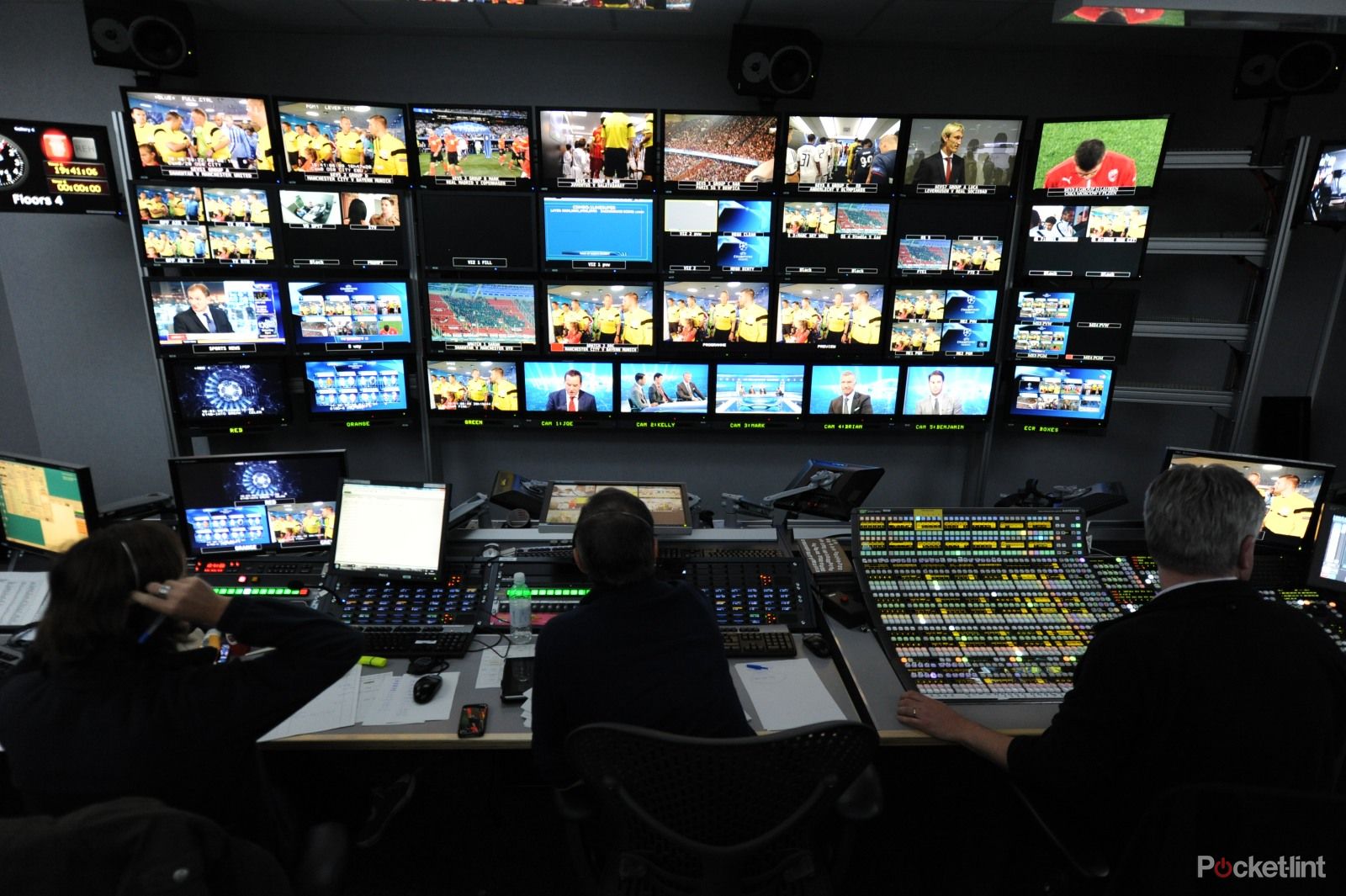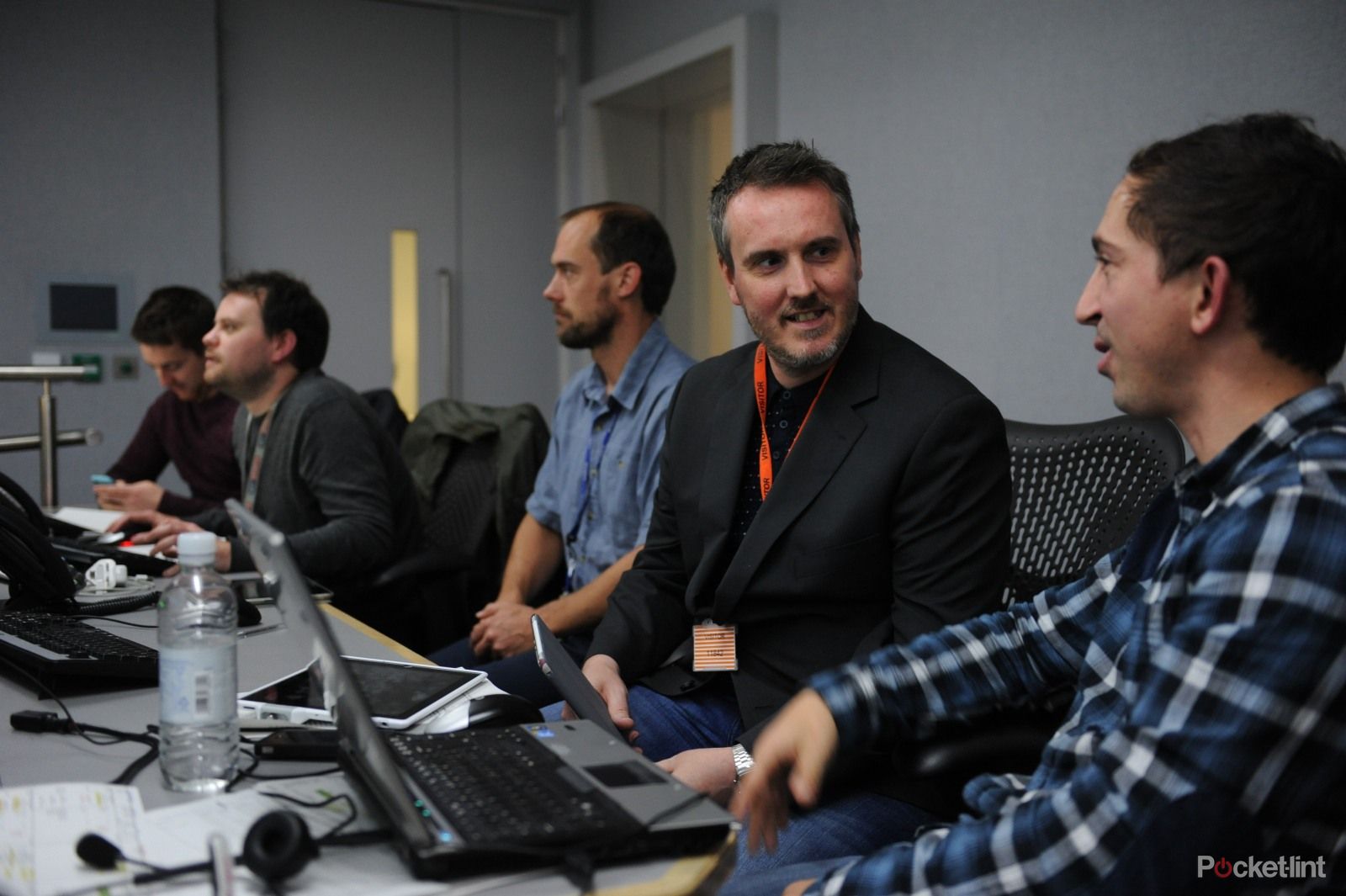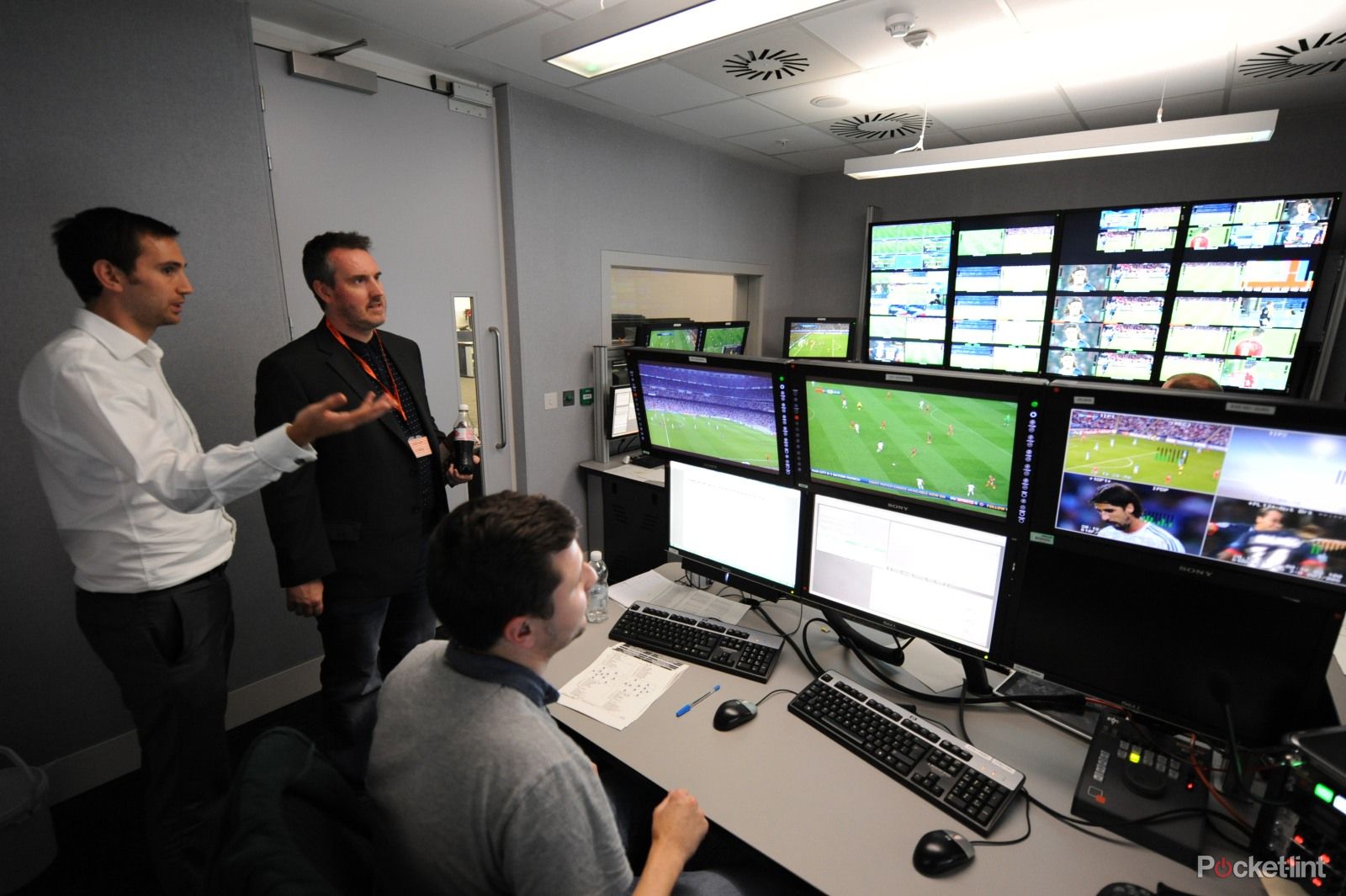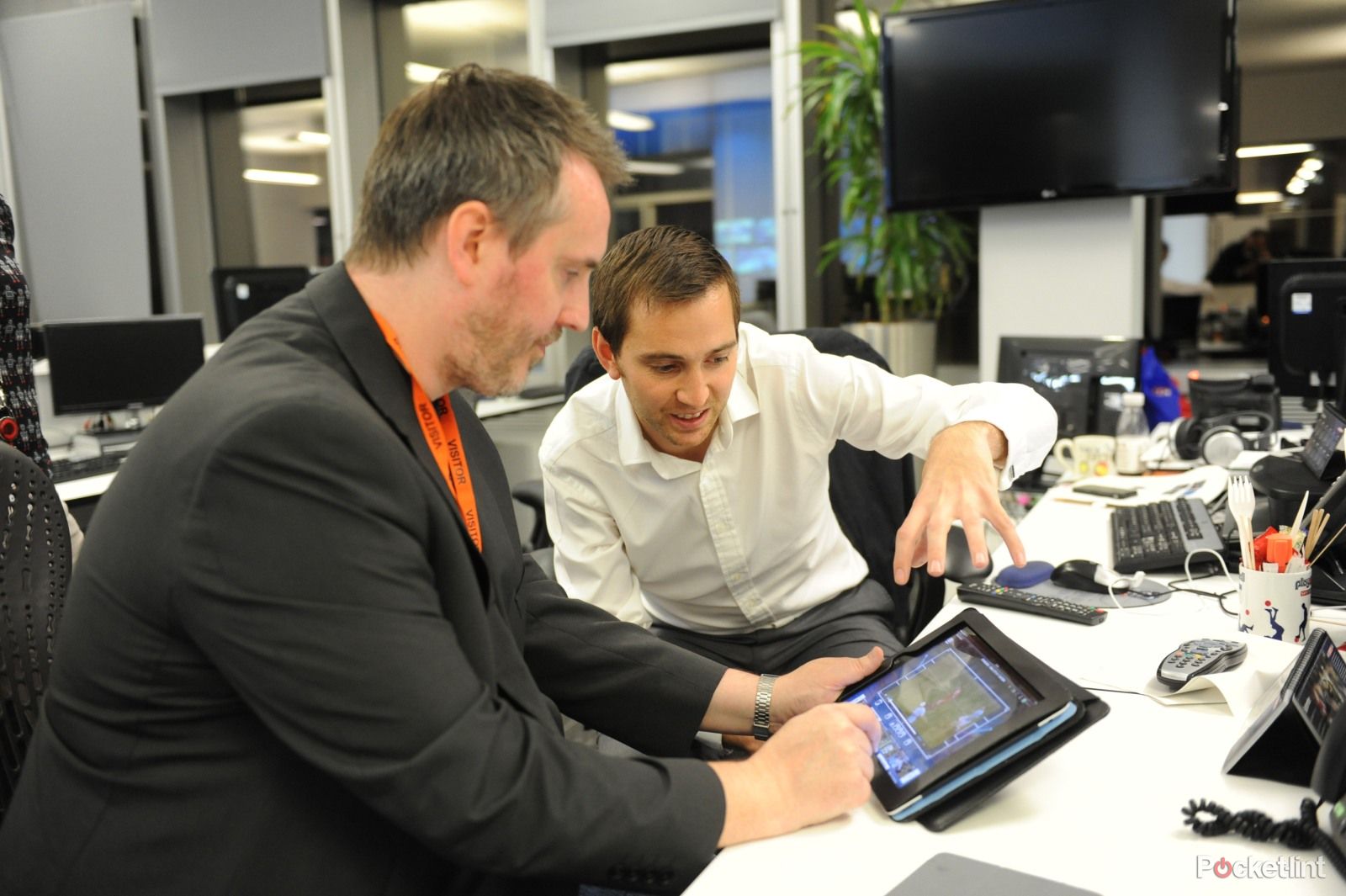When Sky Sports introduced the Red Button services to its football coverage, some considered the new feature a gimmick, others a side-show to the main event. But today, with the company's smartphone and tablet applications in full swing and unprecedented online access available, it could be argued that traditional linear broadcasts are becoming the side-show to the company's digital offering.
Sky has never been shy in its intent to innovate in all areas of what it does. Rival companies may come up with something new every now and then. Sky seemingly does so with alarming regularity.
All aspects of its broadcasting services have benefited from clever integration with technology, including the first HD TV set-top-box in the UK, pause, play and rewind television viewing, and the rapid expansion of its Sky Go service and apps. But it is Sky's long-running love affair with football that has seen the company constantly look for ways to improve its output.
The Red Button service was a mere forerunner to what is available now. Thanks to the rapid rise of the second-screen experience, die-hard football fans have access to more content live and otherwise than they could possibly have imagined previously, and all in their hands while they are watching a chosen live match on TV. It is revolutionising football and sports viewing generally and has certainly piqued Pocket-lint's interest.
That's why, when we were invited to visit Sky Sports in west London on a European Champions League night, to see how the digital offering was put together in tandem with the main broadcast, we couldn't refuse. And not simply because we got to meet Sky Sports News anchor Hayley McQueen.
We spent some time in the main studio, with Jeff Stelling, Jamie Redknapp, Graham Souness and guest for the night Gareth Barry chewing the cud. We toured the Sky Sports Digital Media department to see the teams in charge of the alternative match streams in action. And we stopped off at the Sky canteen to have a rather nice corned beef hash and chips.
But one extremely important area to visit was the production gallery for Sky Sports' big live match of the night, Manchester City versus Bayern Munich, because it was there we found out that times they are a-changin'.
Admit that the waters around you have grown
In the main studio gallery there was the usual hustle and bustle you'd expect from a live production. A large team of editors, a producer, a director and other people whose jobs also probably ended in "or" were gathered around making telly. Importantly though, one of the digital media team had a seat in the arena too.
This is a fairly new idea, and is a definitive sign that the digital side of the proceedings is gaining in import, not only to the public watching and engaging with Sky's services, but also within the traditional production set-up.
In previous years, the digital output would be managed elsewhere in a building or even off site. In some cases and with some channels that's still true. However, with somebody from the digital team in the gallery itself, it means that they feel part of a larger production. And they can gain insight into the programming to include in their own content delivery.
Football content editor Stephen Mills, for example, was in the gallery that night and was tasked, among other things, to keep the live blog and Twitter feed up to date with news, statistics and comments from some of the studio talent. He kept a close eye on what presenter Stelling and the pundits were saying, and all from a seat in the room next door to them. That closeness makes a massive difference.
Mills wasn't the only person working on the feeds that night - others worked upstairs in the digital media offices - but he was the one with his finger on the pulse. He was included in the main production, so to speak, and the end result was better for the reader therefore.
It is this integration between the old style of broadcasting and the new that became the underlying theme for our visit throughout.
Pay no attention to that man behind the curtain
Although many might believe that the sum total of Sky's Champions League broadcasting consists of just one or two live matches on a night, with another match or two shown the following night, there is an entire floor of other staff members, production teams, commentators and pundits that deal with the streams of every other live match being played the same night.
The way the Champions League group round works is that, for the most part, all of the teams in four of the eight groups play each other on a Tuesday night, the other half play on the following Wednesday. That means there are eight games each Champions League night, and all will be covered by Sky in one way or another. This has been part of the Red Button service for some time, but recently also makes up the numerous viewing options available on the Sky Sports for iPad app.
Apart from access to Twitter feeds, the constantly updated statistics on the Sky Sports web pages, news and commentary on a variety of other platforms, football fans who own iPads and have Sky TV and Sky Sports subscriptions can see any match of their choosing live on the Sky Sports for iPad app. And they can flit between any of those broadcast.
What that means is that there still needs to be the same quality of presentation for each match, regardless of whether they are on the main Sky Sports channels or not. For the Sky Sports Digital Media team, that means production members having to watch all matches at once, some to update the on-screen scores, some to package the goals, and a host of additional commentators and football pundits locked in boxes scattered around the office.
Each of those matches might not have quite the resources of the main live shows, but you wouldn't know it by the quality of the end products.
It was on this level that we were given a guided tour by Tom Middleditch, the senior manager of video products, Sky Sports Digital Media. And it is he that explained that it is somebody's job to press a button when a goal is scored and why.
You'd better push the button and let me know
Automation for the score graphic that appears on screen during matches is inevitable, admitted Middleditch, but not for the foreseeable future. When we asked him whether computer software could replace the human interaction required to simply update a score, his answer was actually quite obvious. How could a computer know whether a goal was subsequently disallowed or not? What if the ball had crossed the line, but there was a foul in the build-up? And what would production runners do in an evening if they can't sit waiting on tender hooks for a goal to occur?
In fact, when Middleditch was lower down in the pecking order, pushing the button was one of the better jobs on the rota. You get paid for watching football, he told us. What's better than that?
The senior manager of the department also sat with us to take us through the latest iteration of the Sky Sports for iPad app, and the Champions League event centre in particular. We were impressed: not only can you watch any of the matches live, explore the live statistics down to the most minute detail, but you can also direct the action yourself. Sort of.
In a feature called Sky Sports 360, replays of goals and other key moments become available throughout the match - another task for the digital media team - and not only can you stream the event on demand, you can also choose which camera view you would like to see it replayed through, even switch between them during the playback. More camera viewpoints become available as time wears on, so by the end of a game you might have access to all available cameras, chopping and changing between them as you see fit.
While we were with Middleditch, Manchester City's Joe Hart made a couple of the most famous of his recent goalkeeping blunders, letting Franck Ribery's goal whizz under his arm when he should really have saved it and then palming Arjen Robben's weak shot into his own net. These became great examples to illustrate the app's talents. Not so much for a Man City fan, but we watched them from pretty much every conceivable angle.
They think it's all over
And, more than anything else, this gave us the strongest indication of where Sky wants to take its sports coverage in the future, not just football. Rather than watch two or more matches at once, or read Twitter feeds of experts' or peers' thoughts on the action, or watch intently as a score flips over knowing that it is keeping someone in work, Sky Sports is offering engagement that football fans have never really had before.
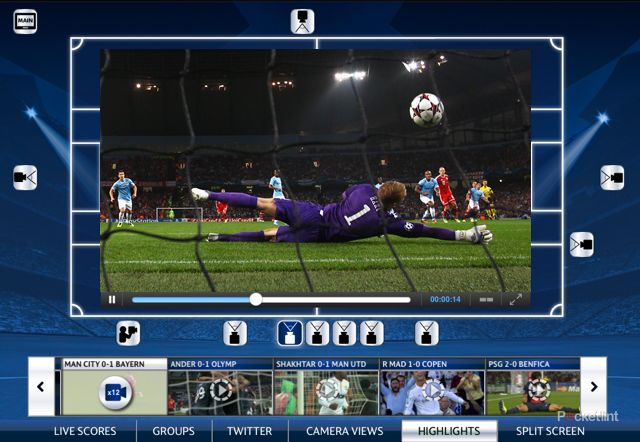
The Champions League night was a great example because, as Middleditch explained, Sky has more access to multiple feeds and streams from the tournament than it does from the Premier League for domestic games, but the potential is there to expand to other areas of the broadcaster's output. Formula One has already got multi-camera feeds on race days, and other sports such as golf and cricket have had their interactive events too, but we fully expect Sky to further entwine its digital strategy in everything it does.
It is no longer an additional feature to the main show. It is very much a part of the main show. Red button and all.
You can download the Sky Sports for iPad app from iTunes. It is free to download, but you will need to be a Sky Sports subscriber through Sky to gain access to the live features.

